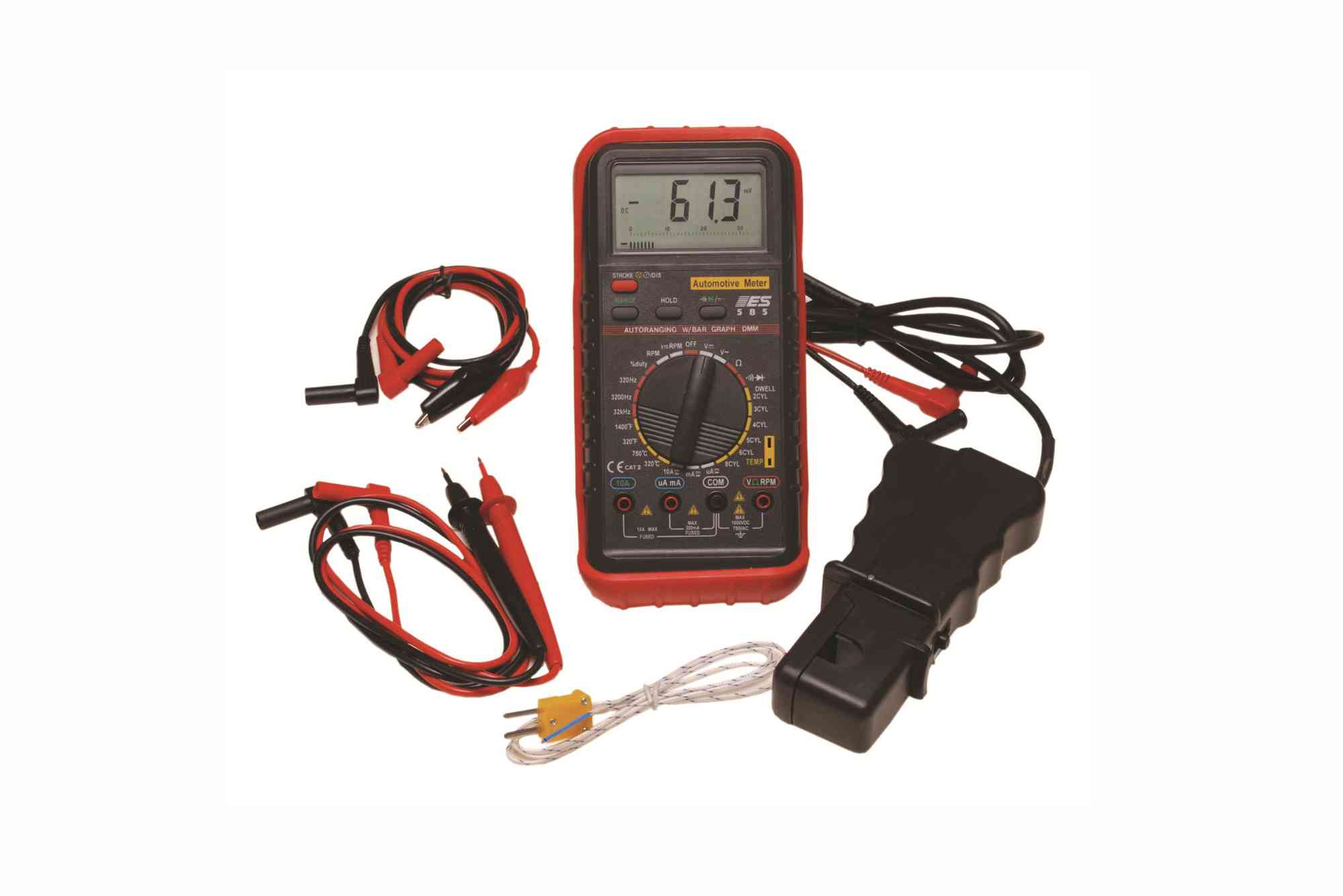How to Use an Automotive Multimeter with RPM for Accurate Diagnoses
When diagnosing modern vehicles, precision is everything. An automotive multimeter with RPM is one of the most powerful tools for mechanics and DIY enthusiasts. Unlike a standard multimeter, this specialized device measures not just voltage, current, and resistance but also engine revolutions per minute (RPM). This makes it invaluable for checking ignition systems, alternator health, and overall engine performance. Understanding how to use it correctly ensures accurate diagnoses and helps prevent costly misdiagnoses.
Why an Automotive Multimeter with RPM is Essential
An ordinary digital multimeter can test electrical systems, but it cannot capture engine performance. By integrating RPM functionality, an automotive multimeter allows mechanics to:
- Measure engine idle and load conditions
- Verify ignition timing and spark plug performance
- Identify misfires and irregular engine operation
- Troubleshoot alternator and charging system problems
This combination of electrical and mechanical data gives a complete picture of a vehicle’s health, making repairs more efficient.
Getting Started with an Automotive Multimeter with RPM
Before diving into diagnostics, it is important to familiarize yourself with the device and its settings. Most models come with additional leads or adapters specifically designed for RPM testing.
Understanding the Multimeter Functions
Every automotive multimeter with RPM typically includes:
- Voltage (AC/DC) measurement
- Resistance and continuity testing
- Current measurement
- Frequency and duty cycle testing
- RPM measurement for 2, 4, 6, or 8-cylinder engines
Safety Precautions Before Testing
Safety is critical when working around running engines. Follow these steps:
- Wear insulated gloves and safety glasses
- Keep clothing and hair away from moving parts
- Ensure leads are properly insulated and not frayed
- Use the multimeter in a dry, stable environment
How to Use an Automotive Multimeter with RPM
Once you have prepared the tool and vehicle, you can begin testing.
Setting the Multimeter to RPM Mode
Switch the multimeter dial to RPM mode. Some models require selecting the correct cylinder configuration. This ensures the reading corresponds to your specific engine type.
Connecting the Leads
There are two common methods for RPM measurement:
- Direct Ignition Pickup: Attach the RPM lead to the ignition coil, distributor, or spark plug wire.
- Inductive Pickup Clamp: Place the clamp around a spark plug wire. This non-invasive method is safer and more convenient.
Reading the RPM
Start the engine and observe the RPM reading on the multimeter display. Compare it with the manufacturer’s specifications. For example, if idle RPM should be 700–800 and your reading is significantly higher or lower, it indicates an issue.
Analyzing Engine Behavior
Use the multimeter to check RPM under different conditions:
- Idle RPM: Ensures smooth engine operation at rest
- Load RPM: Check performance when accelerating
- Drop Test: Turn off individual cylinders to find weak spark plugs or injectors
Common Diagnostic Applications
An automotive multimeter with RPM opens the door to accurate diagnostics beyond simple voltage checks.
Ignition System Testing
RPM readings help detect misfires caused by faulty spark plugs, ignition coils, or distributors. An unstable RPM pattern signals irregular combustion.
Charging System Evaluation
By combining voltage and RPM readings, you can verify alternator performance. A drop in voltage at higher RPMs often points to alternator issues.
Fuel System Troubleshooting
Inconsistent RPM readings can indicate clogged fuel injectors, poor fuel pressure, or air intake problems. This helps narrow down issues faster than guesswork.
Advantages of Using an Automotive Multimeter with RPM
- Saves time by combining multiple diagnostic tools into one
- Prevents unnecessary part replacements through accurate testing
- Increases confidence in repairs by validating results
- Enhances both DIY car maintenance and professional garage operations
FAQs About Automotive Multimeters with RPM
What is the difference between a standard multimeter and an automotive multimeter with RPM?
A standard multimeter measures electrical values only. An automotive multimeter with RPM adds engine speed measurement, making it more useful for diagnosing cars.
How do I connect my automotive multimeter to measure RPM?
You can use an inductive pickup clamp around a spark plug wire or connect leads directly to the ignition system.
Can I use an automotive multimeter with RPM on any vehicle?
Yes, most models support multiple cylinder settings, allowing use on cars, motorcycles, and small engines. Always confirm compatibility in the user manual.
Why does my RPM reading fluctuate?
Fluctuating RPM may indicate misfires, vacuum leaks, or fuel delivery issues. It could also be due to a loose connection on the multimeter.
Is it safe to measure RPM while the engine is running?
Yes, if you follow safety precautions. Always use insulated leads and avoid touching moving engine parts.
Expert Tips for Accurate Measurements
- Always zero the multimeter before testing
- Use manufacturer specifications as benchmarks
- Double-check connections to avoid false readings
- Repeat tests under different conditions for consistency
When to Replace or Upgrade Your Multimeter
Like any tool, multimeters can wear out. Replace your automotive multimeter with RPM if:
- The display becomes unreadable
- Leads show signs of wear or fraying
- RPM readings are inconsistent despite correct use
Upgrading to a higher-end model may provide added functions such as data logging, Bluetooth connectivity, and advanced ignition analysis.
Maximize Accuracy with an Automotive Multimeter with RPM
An automotive multimeter with RPM is more than just a diagnostic tool—it is a gateway to precise vehicle troubleshooting. Whether you are a professional mechanic or a car enthusiast, learning to use it effectively saves time, money, and frustration. By combining RPM analysis with traditional electrical testing, you gain insights into ignition, charging, and fuel systems like never before.



